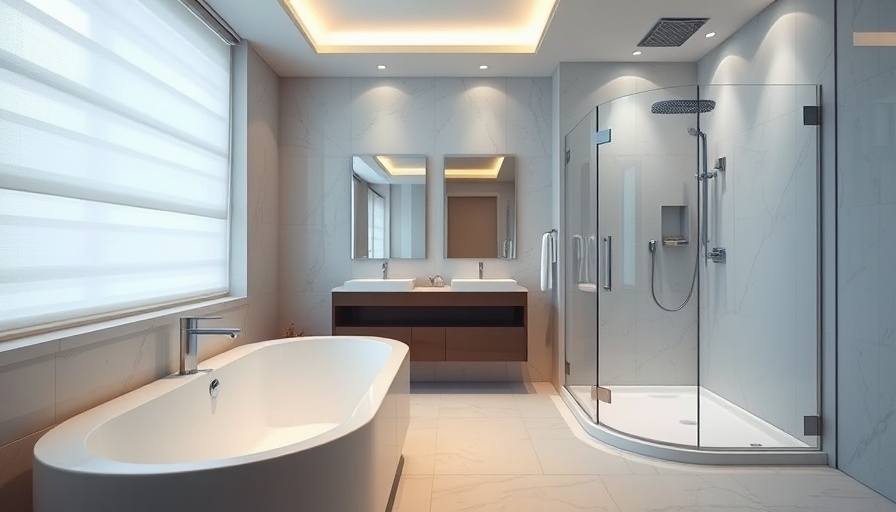
Making the Right Choice: Walk-in Tubs vs. Roll-in Showers
When considering bathroom renovations, many homeowners face a significant choice between walk-in tubs and roll-in showers. Both options cater to individuals with mobility issues or those simply looking for safer bathing alternatives, but understanding their unique advantages is crucial.
The Safety Features That Matter
Walk-in tubs often come equipped with a range of safety features designed to prevent accidents. With built-in seating, grab bars, and non-slip surfaces, they are ideal for older adults or those with mobility concerns. Furthermore, many walk-in tubs harness therapeutic benefits, featuring hydrotherapy jets that provide relief for arthritis or muscle pain, making them not just a practical choice, but a therapeutic haven.
Roll-in showers, on the other hand, excel in accessibility. Their barrier-free design eliminates obstructions, thus allowing for easy entry and exit, crucial for those who rely on wheelchairs. Adjustable showerheads and foldable seats enhance convenience, providing users the freedom to maintain independence while bathing. This adaptability can significantly improve the quality of life for those needing extra support.
Comparative Analysis: Pros and Cons
When it comes to selecting between these two options, it often boils down to personal circumstance and preferences. Here’s a look at how they stack up:
- Walk-in Tubs: While they may require a larger bathroom footprint, these tubs can provide a serene bathing experience. The ability to soak in warm water enhances relaxation, and the therapeutic options can cater to broader family needs.
- Roll-in Showers: Smaller in size, these showers offer a minimalist aesthetic and can be tucked into tighter spaces. They are easier for adjustments and modifications, making them a flexible choice for families.
Emotional and Practical Perspectives
A bathroom renovation should not only address functionality but also provide a sense of comfort and safety. Walk-in tubs can evoke feelings of security for families with older relatives, ensuring peace of mind during their daily routines. Conversely, roll-in showers can inspire a sense of independence, allowing older adults and individuals with disabilities to manage their hygiene without the need for assistance. This shift in autonomy can be incredibly beneficial for their emotional well-being.
Future Predictions: A Shift Toward Accessibility
With an aging population and increasing awareness about disability, the demand for accessible bathroom solutions will continue to rise. Homeowners in Ocean County should anticipate that properties equipped with these bathing options will see increased value. As real estate markets evolve, having features that promote safety can significantly influence buyer interest.
Common Misconceptions: Dispelling Myths
Many people are under the impression that walk-in tubs are exclusively for the elderly, or that roll-in showers lack aesthetic appeal. In reality, both options come in various styles and designs, allowing homeowners to find solutions that match their interiors while serving practical purposes. Modern design elements in both systems can enhance the visual appeal of your bathroom.
Conclusion: Make a Choice for Your Well-being
The decision between a walk-in tub and a roll-in shower is deeply personal, shaped by lifestyle, health needs, and space availability. By weighing the benefits of each option, homeowners can make informed choices that improve not only their immediate living experience but also their long-term property value. As you consider remodels or renovations, think about how these improvements can cater to your family’s varying needs.
For a smooth transition towards an accessible bathroom that best suits your needs, consult professionals who can guide you through options tailored specifically for your home. A thoughtfully renovated bathroom can lead to a joyful living experience. Reach out today to start planning your renovation journey!
 Add Row
Add Row  Add
Add 




 Add Row
Add Row  Add
Add 

Write A Comment